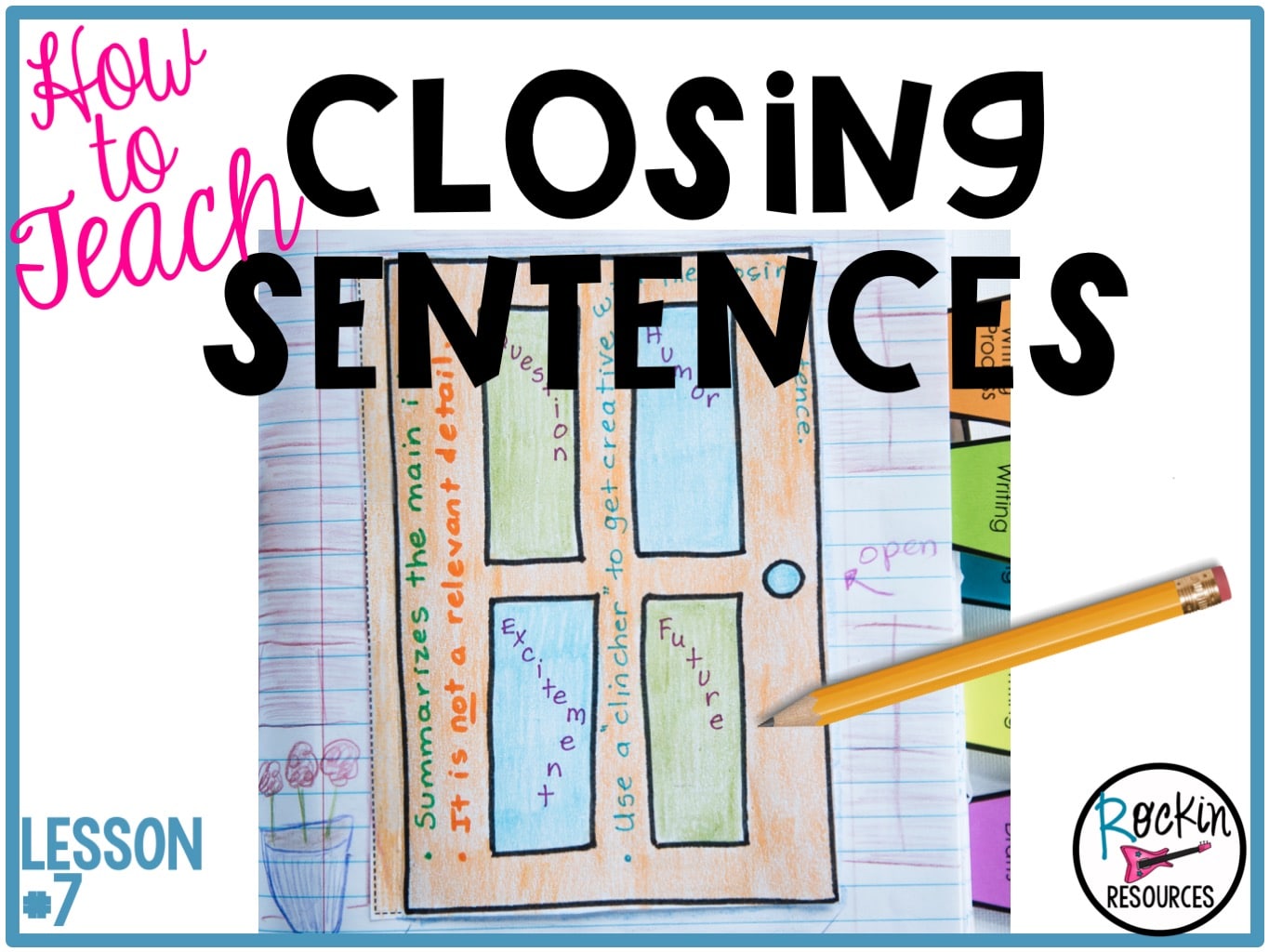Do your students need help finishing a paragraph? This post will not only show you how to teach CLOSING SENTENCES, it will also show you ways to help your students be creative with their closing sentences by writing CLINCHERS. It is part of a STEP-BY-STEP WRITING® series of mini-lessons for writer’s workshop designed to scaffold through the writing process. This lesson is for ending a paragraph, not a concluding sentence to an essay. That will come later in the writing mini-lesson series! If you haven’t covered topic sentences and relevant details, go back to TOPIC SENTENCES first!
MINI LESSON #7: CLOSING SENTENCES is the third lesson for paragraph writing.
1. TEACH
A closing sentence is the concluding sentence. Every paragraph needs an ending. It closes the door to the paragraph! It is the bottom bun of the burger!
- It summarizes the main ideas or feeling of a paragraph.
- It is not a relevant detail in the paragraph.
- It restates the topic sentence.
- Use a “clincher” to be creative with the closing sentence! (question, humor, excitement, or a future thought)
Paragraph: Fall is my favorite season. The weather is perfect for outside activities. I like going on hikes with my brother and fishing with my dad. I look forward to the smell of a fire and the taste of burnt marshmallows. I love fall weather!
2. TAKE NOTES
Students should take notes and write examples of closing sentences. Use interactive notes in a notebook form or digital form. It will help students establish ownership and have an effective resource to guide them when writing paragraphs in the future.
3. GO DEEPER
This is a great opportunity for teaching or differentiating with CLINCHERS. Clinchers are closing sentences that are more creative.
4. PRACTICE
Provide students with practice. Practice, Practice, Practice! Scaffold the practice. First, students identify closing sentences in paragraphs. Then students can write their own closing sentences or clinchers. This can be done by giving prompts and only writing the closing sentence or clincher for each prompt. It can also be used with the previous lessons, so students can build paragraphs from the topic sentence and relevant details that were already formed. When this lesson, they will have all the components of a paragraph for those prompts! Continue with the graphic organizers to keep the flow of the lessons. This is the bottom bun!
Task cards and self-check slides are a great way to give students extra practice in centers or at home.
5. APPLY AND SHARE
Provide a prompt or have students brainstorm ideas for a paragraph. Students now have all the skills necessary to write an effective paragraph. After students write a paragraph, focus on the closing sentence. OR give students a paragraph without the closing sentence and have them add it.
After everyone is finished, students can present their paragraphs in groups or whole group and other students can point out the closing sentence. Discuss how they close the door to the paragraph and restate the main idea.
6. ASSESS AND TRACK
Now you are at the end of paragraph writing! Have students work independently on writing a paragraph. Use a rubric to assess their skills in paragraph writing. Then record their progress. Each time you grade paragraph writing, record it on the same form. This will be helpful when forming small instructional groups and review.
I hope this helps you and your students (or child) understand how to write a paragraph!!!!
Next Lesson: MINI LESSON #8 CREATING A TABLE OF CONTENTS
Check out my FREE writing masterclass! CLICK HERE
LAST MINI LESSON:MINI LESSON #6- RELEVANT DETAILS
This lesson is also included in the STEP-BY-STEP WRITING® Programwith mini-lessons designed to scaffold through the writing process. Writing units included are sentence structure, paragraph writing, narrative writing, opinion writing, and informative writing. See what is included in the image below and click on it to learn more about them! You will turn your reluctant writers into ROCKSTAR WRITERS™!
Thank you for this comprehensive writing program. I have always found it difficult to teach writing to my students. My students all have specific learning disabilities and this has been a great resource for them and me. The quality of writing coming from them this is year has increased from the previous year. Thank you again!! –Alison B.
ROCK ‘N’ WRITE!!!!!










